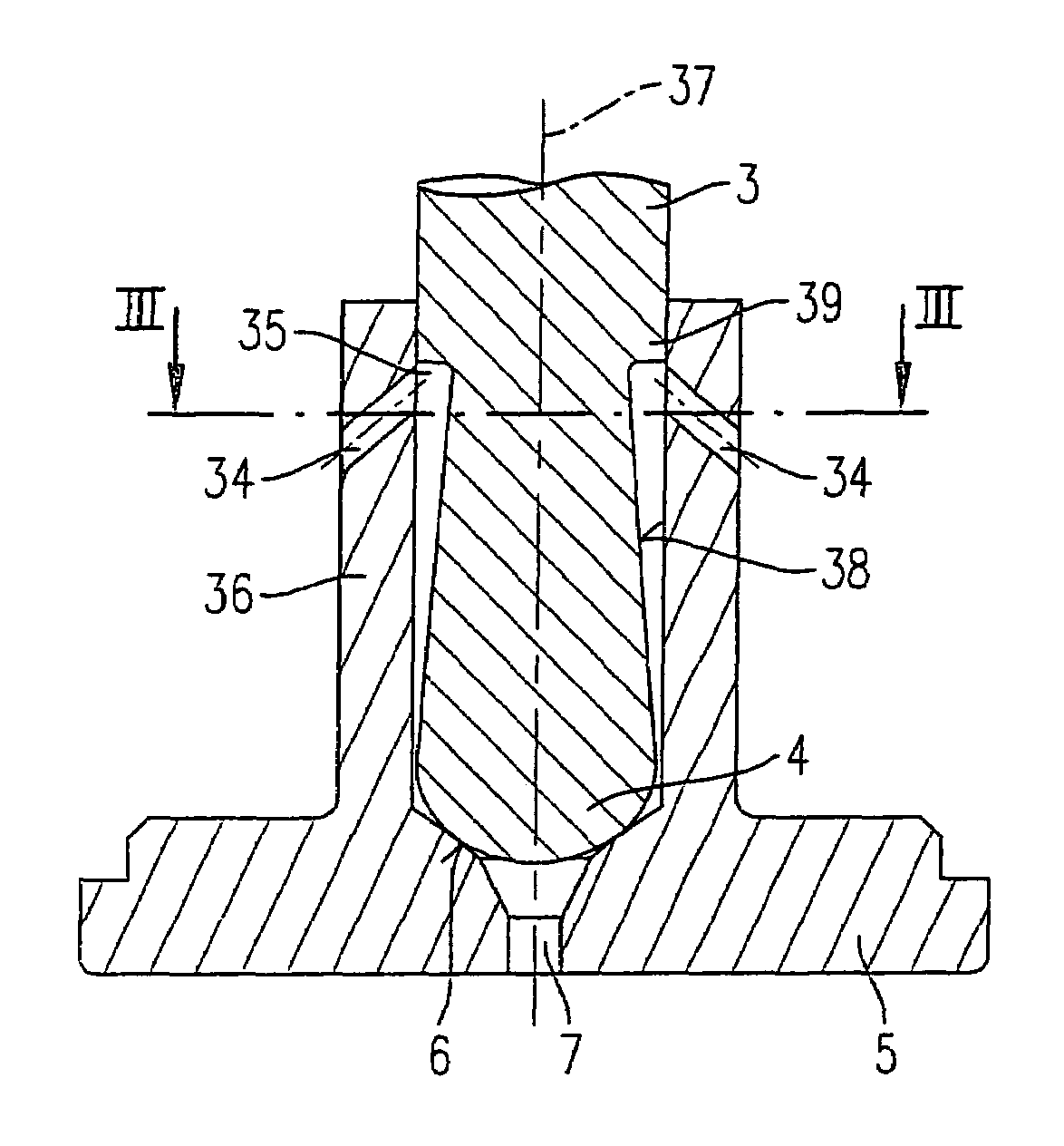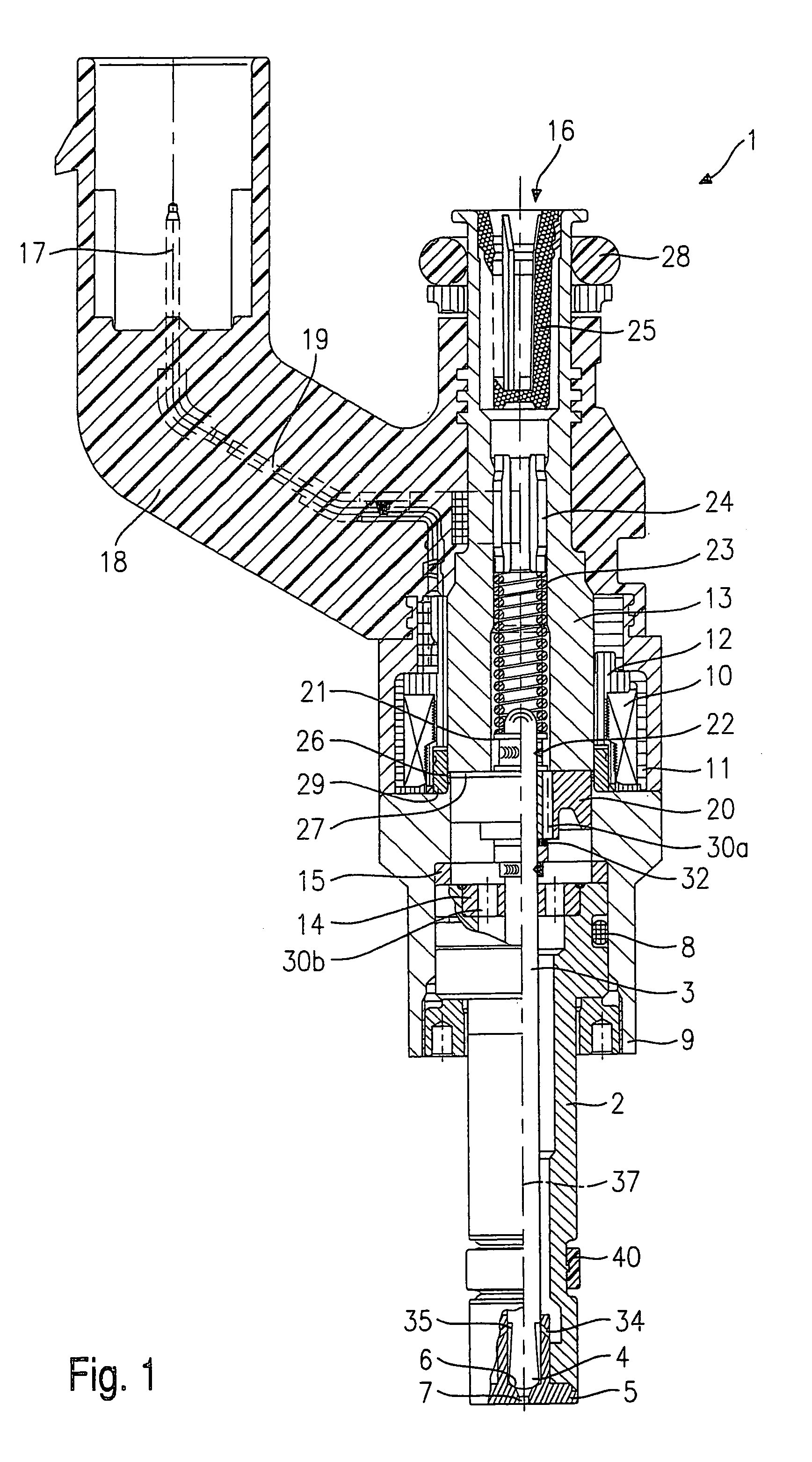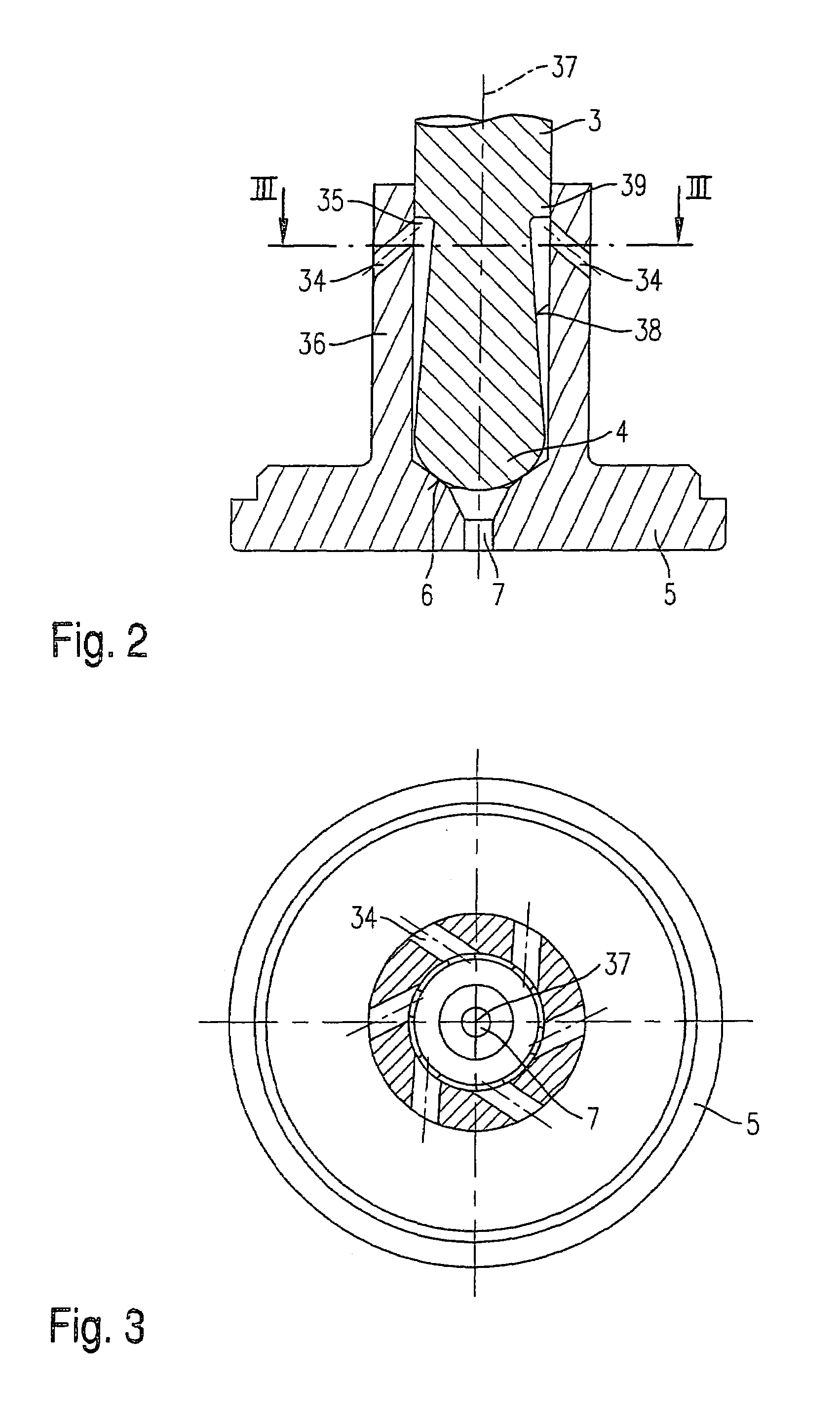Fuel injection valve
a technology of fuel injection valve and injector, which is applied in the direction of fuel injection apparatus, spraying apparatus, feeding system, etc., can solve the problems of undesired burrs at the outlet of the swirl channel, additional expense in removing the residue after the swirl channel has been produced, and difficulty or impossible to produce tiny droplets of liquefied material produced in the drilling process, etc. cost
- Summary
- Abstract
- Description
- Claims
- Application Information
AI Technical Summary
Benefits of technology
Problems solved by technology
Method used
Image
Examples
Embodiment Construction
[0016]The first exemplary embodiment of a fuel injector 1 according to the present invention, shown in FIG. 1, is configured for fuel-injection systems of mixture-compressing internal combustion engines having externally supplied ignition. Fuel injector 1 is suited, for example, for the direct injection of fuel into a combustion chamber (not shown) of an internal combustion engine.
[0017]Fuel injector 1 is made up of a nozzle body 2 in which a valve needle 3 is positioned. Valve needle 3 is in operative connection with a valve-closure member 4, which cooperates with a valve-seat surface 6 positioned on a valve-seat member 5 to form a sealing seat. Fuel injector 1 in the exemplary embodiment is an inwardly opening fuel injector. Nozzle body 2 is sealed from outer pole 9 of a magnetic coil 10 by a seal 8. Magnetic coil 10 is encapsulated in a coil housing 11 and wound on a coil brace 12, which rests against an inner pole 13 of magnetic coil 10. Inner pole 13 and outer pole 9 are separa...
PUM
 Login to View More
Login to View More Abstract
Description
Claims
Application Information
 Login to View More
Login to View More - R&D
- Intellectual Property
- Life Sciences
- Materials
- Tech Scout
- Unparalleled Data Quality
- Higher Quality Content
- 60% Fewer Hallucinations
Browse by: Latest US Patents, China's latest patents, Technical Efficacy Thesaurus, Application Domain, Technology Topic, Popular Technical Reports.
© 2025 PatSnap. All rights reserved.Legal|Privacy policy|Modern Slavery Act Transparency Statement|Sitemap|About US| Contact US: help@patsnap.com



